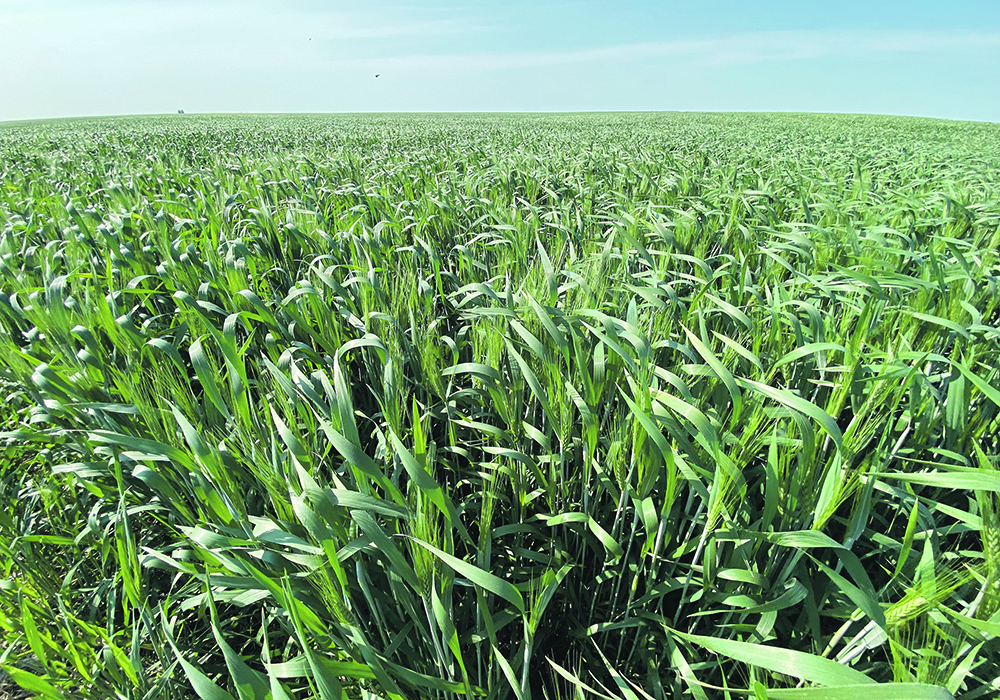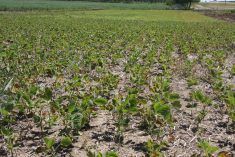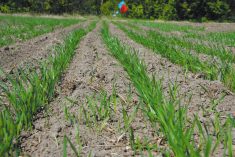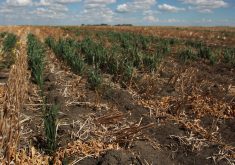Grain quality concerns could drive prices even higher in the short term as recent rain interrupts harvest operations
Only time will tell how much top quality durum will be harvested in Western Canada and the northern United States this fall.
But if current markets are any indication, production and supplies will fall well below normal.
Growers on both sides of the border will be watching durum markets closely and timing their sales carefully, says Dustin Johnsrud, a grower from Epping, North Dakota.
Despite some of the highest prices ever witnessed, no one is rushing to the market, he added.
“I don’t think farmers around here are going to haul anything until the middle of 2022,” Johnsrud said.
Read Also

Critical growing season is ahead for soybeans
What the weather turns out to be in the United States is going to have a significant impact on Canadian producers’ prices
“I think a lot of the durum that’s produced in this area is going to get hauled into the bin and it’s going to end up staying there for a while.”
In the northern United States, durum growers have faced a tough year.
Growers who caught a few timely rains during the growing season are still expecting average or near average yields, Johnsrud said.
But for others, grain yields will be well below normal.
In his area, some growers are reporting yields as low as one or two bushels per acre.
State-wide, North Dakota’s average durum yield is estimated at 22 bushels per acre this year.
In a normal year, the state average is around 42 bu.
Next door in Montana, another key durum producing state, yield expectations are even lower.
According to the United States Department of Agriculture, average yields in that state will be about 18 bu. per acre.
With poor yield expectations north and south of the border, cash bids for top quality durum have been steadily rising throughout the summer.
Around Williston, N.D., cash bids last week were in the range of US$14 to $14.50 per bu., the highest prices Johnsrud has ever seen in his farming career.
Recent rain that could have an impact on durum quality are likely to provide additional support to already strong markets.
“This is a really good market right now,” he said.
“If you’re selling durum at any price point right now, you’re making money. But I don’t think anyone is in a hurry.”
In Western Canada, cash bids have also risen to levels not seen for decades.
In southern Saskatchewan last week, cash bids at some locations were approaching C$19.50 per bu.
With recent rains interrupting harvest operations across Western Canada’s durum producing regions, grain quality concerns could drive prices even higher in the short term.
Statistics Canada is scheduled to release updated Canada-wide durum production estimates on Aug. 30.
Bruce Burnett, director of weather and markets for Glacier FarmMedia, is expecting the estimate to come in well below the Agriculture Canada’s 5.8 million tonne forecast.
Canadian durum growers are looking at a “massive drop in production potential” this year, he added.
“These are the worst conditions that we’ve seen since either the early 2000s or 1988, depending on where you are and how you view things,” Burnett said.
“My current estimate for the crop is looking for (Canadian) durum production somewhere in the 3.5 to four million tonne range.”
Burnett suggested that a small western Canadian crop, combined with well below average yields on North Dakota and Montana, could keep North American durum prices high for some time.
Global durum production is typically in the mid- to upper 30 million tonne range. In a normal year, Canada will produce as much as 6.5 million tonnes and the U.S. will harvest about two million tonnes.
Production in other key areas including Turkey and Algeria is also expected to be down this year, meaning import demand from those regions could be higher than normal.
“We (Canada and the U.S.) are a significant part of (global) production but I think more significantly, what we are is we’re virtually all of the exportable supply of durum,” Burnett said.
“So, in other words, importing countries rely on North America for supplies of durum for their domestic markets and that’s going to be the big issue this year.”
How high can prices for Canadian durum go?
That’s the question that every grower is asking.
“I think the first thing we need is that there’s a global durum shortage so that, I think, is fundamentally positive for markets,” Burnett said.
“Also, the next durum crop to be harvested that has any significant amount of exportable surplus… is actually the southern North American crop, which is California, Arizona as well as Mexico, and that doesn’t happen until April or May. So there’s a long time for this short supply to last us.”
For more content related to drought management visit The Dry Times, where you can find a collection of stories from our family of publications as well as links to external resources to support your decisions through these difficult times.



















